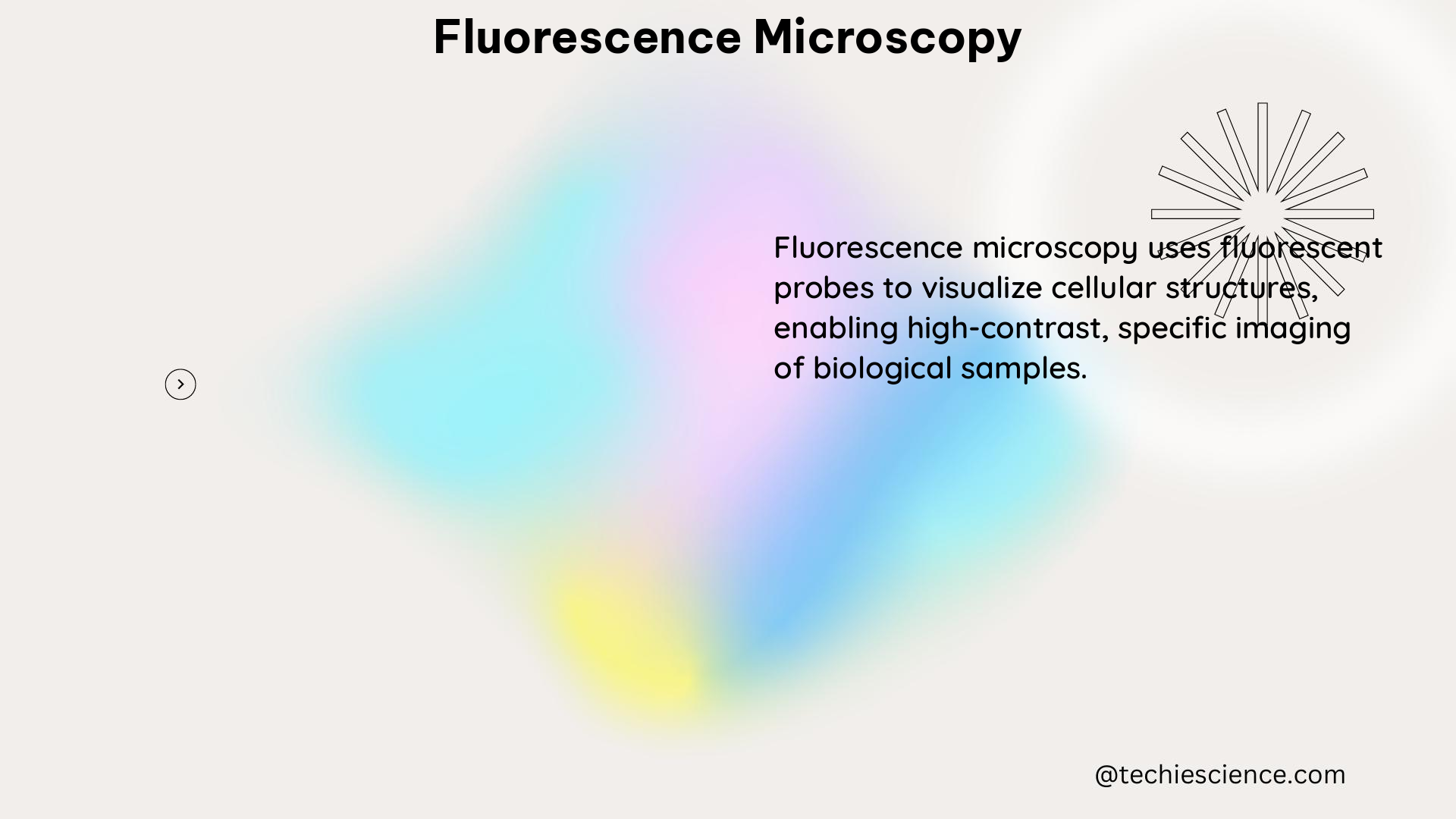Fluorescence microscopy is a powerful analytical technique that allows researchers to visualize and quantify specific molecules within biological samples. This method relies on the excitation of fluorescent molecules, known as fluorophores, and the subsequent detection of the emitted light. The accuracy and precision of quantitative fluorescence microscopy measurements are crucial for reliable data acquisition, making it an essential tool in life sciences research.
Pixel Size and Spatial Resolution
The pixel size of a digital image is a key factor in fluorescence microscopy, as it directly determines the spatial resolution of the image. Pixel size is typically measured in micrometers (µm) or nanometers (nm) and represents the smallest distance between two distinguishable points in the image.
For example, a pixel size of 0.1 µm would correspond to a spatial resolution of 100 nm, meaning that the microscope can resolve features as small as 100 nm. This level of resolution is essential for visualizing and quantifying subcellular structures, such as organelles, protein complexes, and individual molecules.
The relationship between pixel size and spatial resolution can be expressed mathematically as:
Spatial Resolution = Pixel Size × Nyquist Sampling Criterion
The Nyquist Sampling Criterion states that the sampling rate (i.e., pixel size) must be at least twice the highest spatial frequency of the image to avoid aliasing artifacts. This means that the pixel size should be no larger than half the desired spatial resolution.
Field of View (FOV)

The field of view (FOV) is the area of the sample that is visible in the microscope’s viewfinder. It is typically measured in square micrometers (µm²) and depends on the objective lens’s magnification and the camera’s sensor size.
For instance, a 20x objective lens with a 0.5 µm pixel size and a camera sensor size of 1/2.3″ would result in a FOV of approximately 0.5 mm². This information is crucial for determining the spatial scale of the acquired images and for planning experiments that require the visualization of specific regions within a sample.
The FOV can be calculated using the following formula:
FOV = (Sensor Width × Sensor Height) / (Objective Magnification × Pixel Size)^2
where the sensor width and height are typically given in micrometers (µm).
Dynamic Range
The dynamic range of a camera is the ratio between the maximum and minimum detectable signal levels. It is usually measured in bits and represents the camera’s ability to capture a wide range of signal intensities.
For example, a 12-bit camera has a dynamic range of 4096:1, while a 16-bit camera has a dynamic range of 65536:1. A higher dynamic range allows the camera to capture more subtle variations in fluorescence intensity, which is essential for quantitative analysis.
The dynamic range can be calculated as:
Dynamic Range = 2^Bit Depth
where the bit depth is the number of bits used to represent the pixel values.
Signal-to-Noise Ratio (SNR)
The signal-to-noise ratio (SNR) is the ratio of the signal intensity to the background noise. It is usually measured in decibels (dB) and represents the camera’s ability to distinguish between the signal and the noise.
For example, an SNR of 60 dB would correspond to a signal that is 1000 times stronger than the noise. A high SNR is crucial for accurate quantification of fluorescence signals, as it ensures that the measured intensities are primarily due to the target molecules and not to background noise.
The SNR can be calculated as:
SNR = 20 × log10(Signal Intensity / Noise Intensity)
where the signal and noise intensities are typically measured in arbitrary units (a.u.).
Excitation and Emission Wavelengths
Fluorescence microscopy relies on the excitation and emission of specific wavelengths of light. The excitation wavelength is the wavelength of light used to excite the fluorophore, while the emission wavelength is the wavelength of light emitted by the fluorophore.
For example, GFP (Green Fluorescent Protein) has an excitation peak at 488 nm and an emission peak at 509 nm. The choice of fluorophore and the corresponding excitation and emission wavelengths is crucial for the specific labeling and visualization of target molecules within a sample.
The relationship between the excitation and emission wavelengths can be described by the Stokes shift, which is the difference between the excitation and emission wavelengths. A larger Stokes shift is generally desirable, as it allows for better separation of the excitation and emission light, reducing the risk of interference and improving the signal-to-noise ratio.
Quantum Efficiency (QE)
The quantum efficiency (QE) of a camera is the ratio of the number of detected photoelectrons to the number of incident photons. It is usually measured as a percentage and represents the camera’s ability to convert incoming photons into detectable signals.
For example, a camera with a QE of 50% would detect 50 photoelectrons for every 100 incident photons. A higher QE is desirable, as it indicates that the camera is more efficient at converting the available photons into a measurable signal, leading to improved image quality and sensitivity.
The QE can be calculated as:
QE = (Number of Detected Photoelectrons) / (Number of Incident Photons) × 100%
Photon Budget
The photon budget is the total number of photons available for detection in a given imaging scenario. It depends on the excitation light intensity, the fluorophore’s brightness, and the camera’s sensitivity.
For example, a photon budget of 10^6 photons would correspond to a signal that is strong enough to be detected with high SNR. Maximizing the photon budget is crucial for improving the image quality and the reliability of quantitative measurements, as it ensures that the detected signal is well above the noise level.
The photon budget can be calculated as:
Photon Budget = (Excitation Light Intensity) × (Fluorophore Brightness) × (Camera Sensitivity)
where the excitation light intensity is typically measured in photons/s/µm², the fluorophore brightness is measured in photons/s/molecule, and the camera sensitivity is measured in photoelectrons/photon.
By understanding and applying these quantifiable details, researchers can optimize their fluorescence microscopy experiments, ensuring reliable and reproducible data acquisition. This knowledge is essential for science students and researchers working in the life sciences field, as it provides a solid foundation for the effective use of this powerful analytical technique.
References:
– Culley Siân Caballero Alicia Cuber Burden Jemima J Uhlmann Virginie, Made to measure: An introduction to quantifying microscopy data in the life sciences, 2023-06-02, https://onlinelibrary.wiley.com/doi/10.1111/jmi.13208
– Quantifying microscopy images: top 10 tips for image acquisition, 2017-06-15, https://carpenter-singh-lab.broadinstitute.org/blog/quantifying-microscopy-images-top-10-tips-for-image-acquisition
– A beginner’s guide to improving image acquisition in fluorescence microscopy, 2020-12-07, https://portlandpress.com/biochemist/article/42/6/22/227149/A-beginner-s-guide-to-improving-image-acquisition
– Principles of Fluorescence Spectroscopy, Joseph R. Lakowicz, 3rd Edition, Springer, 2006.
– Fluorescence Microscopy: From Principles to Biological Applications, Edited by Ulrich Kubitscheck, 2nd Edition, Wiley-VCH, 2017.
– Fluorescence Microscopy: Super-Resolution and other Advanced Techniques, Edited by Ewa M. Goldys, 1st Edition, CRC Press, 2016.

Hi, I am Sanchari Chakraborty. I have done Master’s in Electronics.
I always like to explore new inventions in the field of Electronics.
I am an eager learner, currently invested in the field of Applied Optics and Photonics. I am also an active member of SPIE (International society for optics and photonics) and OSI(Optical Society of India). My articles are aimed at bringing quality science research topics to light in a simple yet informative way. Science has been evolving since time immemorial. So, I try my bit to tap into the evolution and present it to the readers.
Let’s connect through